In 1962, NASA began an Art Program. Through art the Space Agency would visualise the wonder of its work. The archives feature interpretations of space travel by such notable artist as Norman Rockwell, Andy Warhol, Mitchell Jamieson, Paul Calle and Annie Leibovitz.
James Webb, NASA’s top man when the programme began, explains the thinking:
“Important events can be interpreted by artists to provide unique insight into significant aspects of our history-making advances into space. An artistic record of this nation’s program of space exploration will have great value for future generations and may make a significant contribution to the history of American art.”
Artists were granted special, behind-the-scenes access to scientists, astronauts, engineers, and other NASA personnel. the results are terrific. But it makes us wonder what happened to the dream of space exploration?

First Steps
Artist: Mitchell Jamieson, 1963
Media: Acrylic, gauze, and paper on canvas
Description: In a silver-colored spacesuit, astronaut Gordon Cooper steps away from his Mercury spacecraft and into the bright sunlight on the deck of the recovery ship after 22 orbits of Earth. Mitchell Jamieson documented Cooper’s recovery and medical examination and accompanied him back to Cape Canaveral.
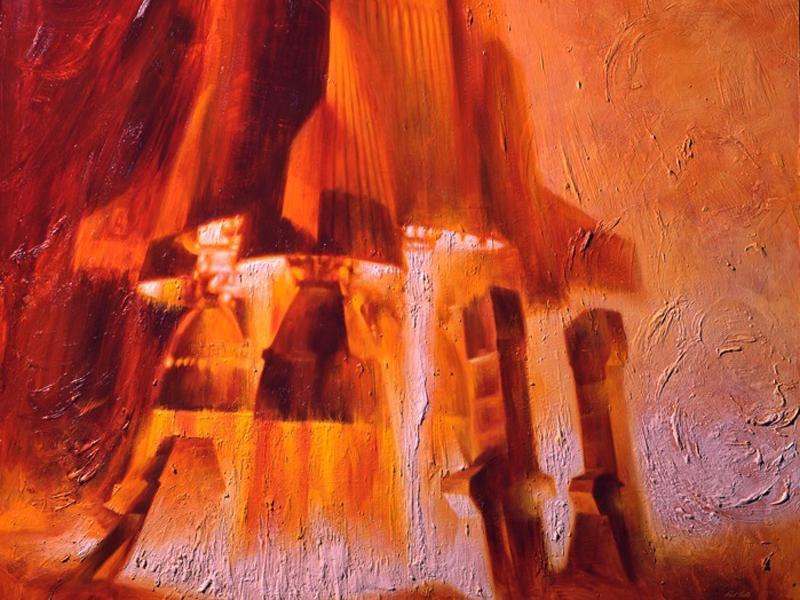
Power
Artist: Paul Calle, 1963
Media: Oil on panel
Description: This painting depicts the first seconds of lift-off of the Saturn V moon rocket.
Each of the 5 F-1 engines could encompass a full grown man standing up, and produced over 1.5 million pounds of thrust.
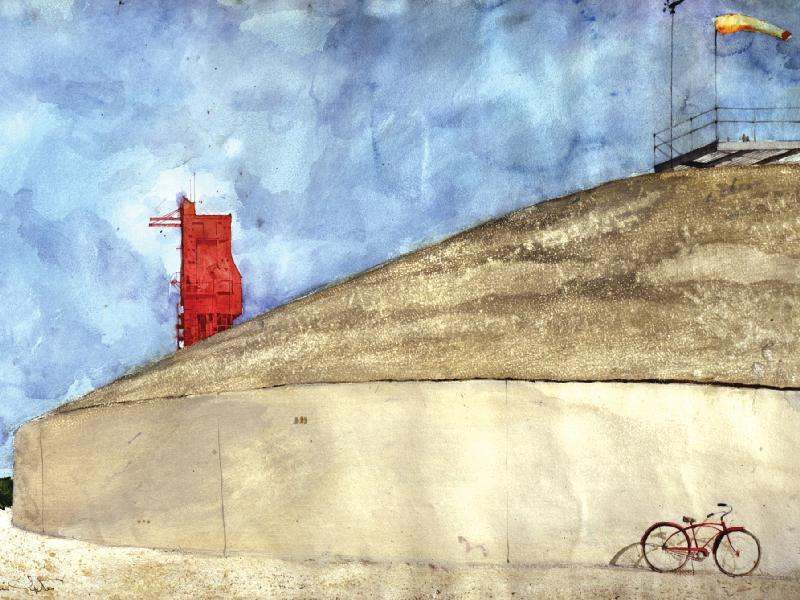
Gemini Launch Pad
Artist: James Wyeth, 1964
Media: Watercolor on paper
Description: In the early days of manned spaceflight, technicians responsible for a launch worked in a domed, concrete-reinforced blockhouse, protected from accidental explosions. Although surrounded by cutting-edge technology, the technicians relied on a bicycle for check-up trips to the launch pad.
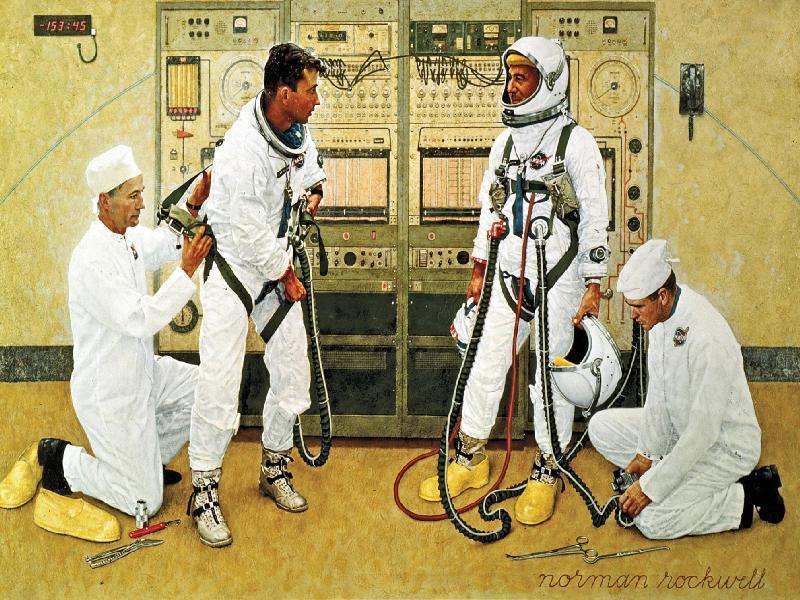
Grissom and Young
Artist: Norman Rockwell, 1965
Description: Astronauts John Young and Gus Grissom are suited for the first flight of the Gemini program in March 1965. NASA loaned Norman Rockwell a Gemini spacesuit in order to make this painting as accurate as possible.
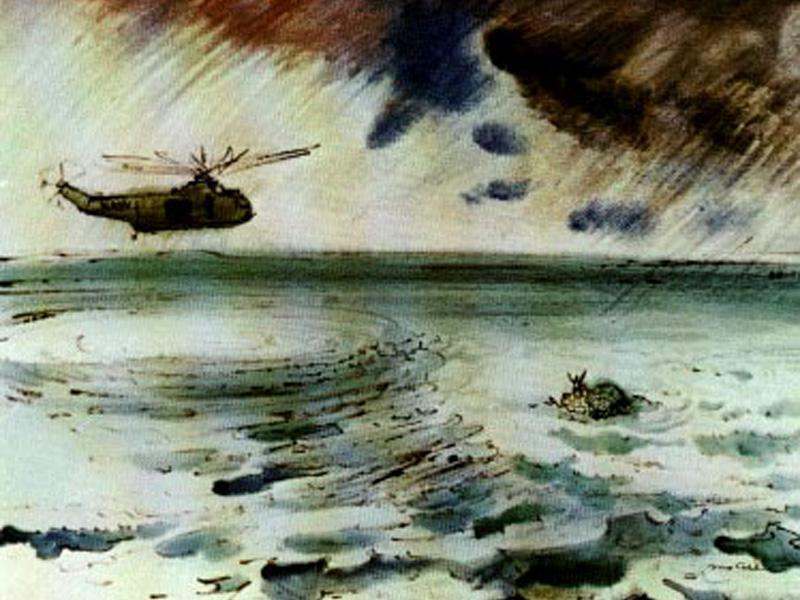
Gemini Recovery
Artist: Robert McCall, mid-1960s Media: Watercolor
Description: The Gemini V crew, Gordon Cooper and Charles Conrad, bob in a life raft beside their spacecraft as a helicopter comes to the rescue after their Earth orbital mission, which took place in August 1965. It was the longest manned flight to date — 7 days, 22 hours, and 55 minutes. Artist Robert T. McCall documented the return of the crew from the recovery ship USS Lake Champion in the Atlantic Ocean.
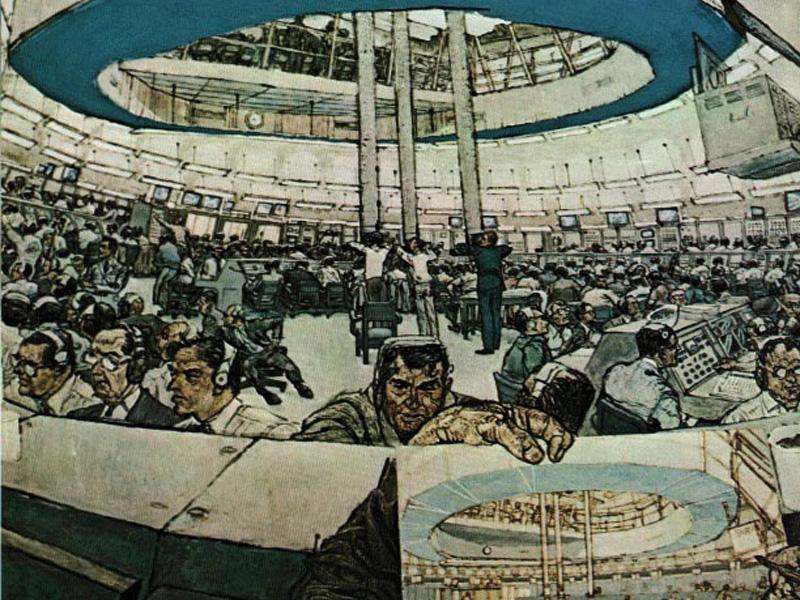
Saturn Blockhouse
Artist: Fred Freeman, 1968
Media: Acrylic on canvas
Description: As a participant in NASA’s art program, Fred Freeman gained unlimited access to space facilities during missions. Here, he shows us just how close he was, even depicting his coffee cup resting on the console.
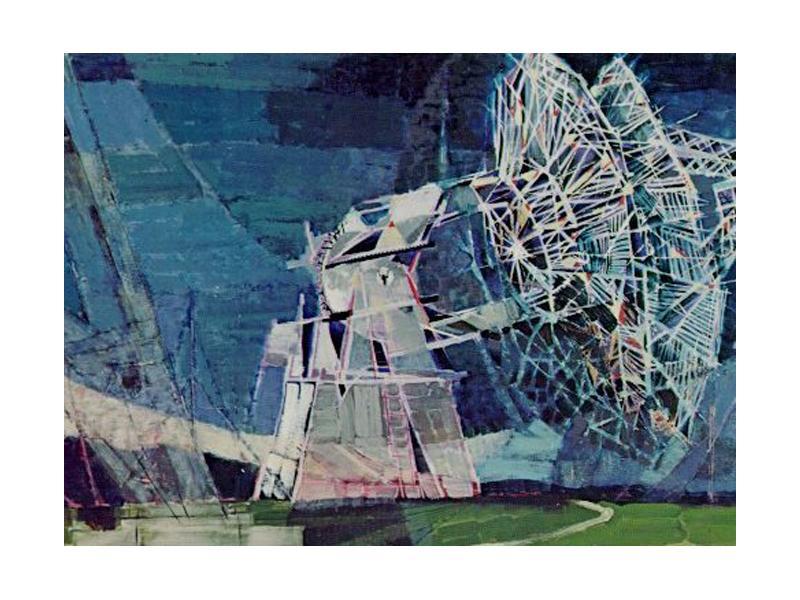
Big Dish Antenna
Artist: Paul Arlt, 1968
Media: Acrylic on polyester
Description: This large antenna was part of NASA’s worldwide tracking network. In order to maintain contact with Earth-orbiting spacecraft, it was necessary to establish communication stations around the world.
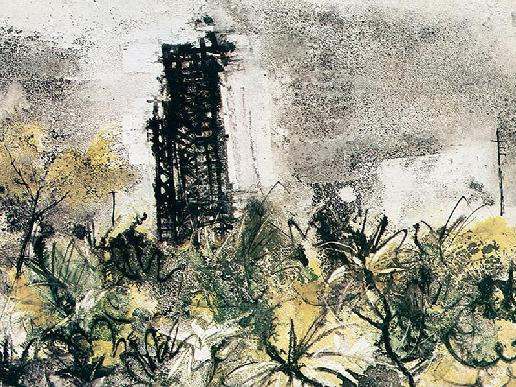
Space Age Landscape
Artist: William Thon, 1969
Media: Watercolor on paper
Description: The subtropical climate of Florida soon reclaims an early launch tower. As the space program progressed to larger launch vehicles, smaller gantries were abandoned to seabirds, who found them to be ideal nesting places.
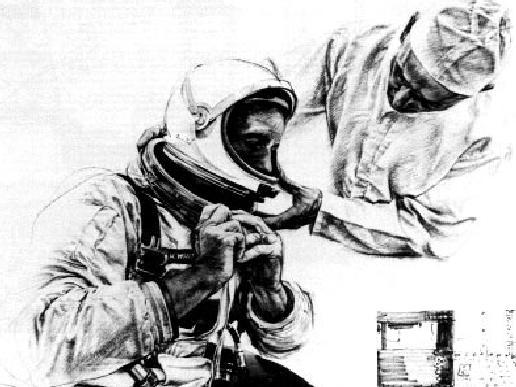
uiting Up
Artist: Paul Calle, 1969
Media: Pencil sketch
Description: This sketch of the Apollo 11 crew ‘Suiting Up’ stands as a visual record of the activities that took place on the morning of July 16th, 1969.
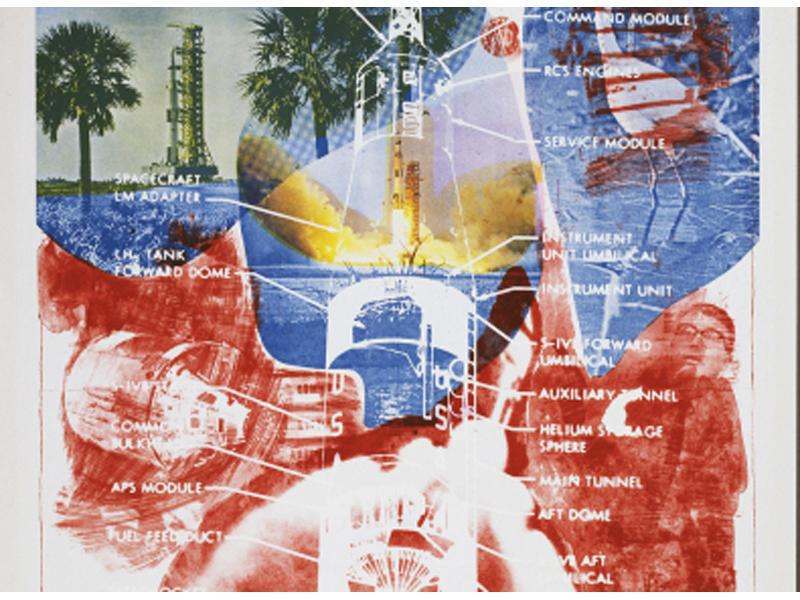
Sky Garden
Artist: Robert Rauschenberg, 1969
Media: Lithograph on canvas
Description: In 1969, Robert Rauschenberg was invited to witness one of the most significant social events of the decade: the launch of Apollo 11, the shuttle that would place man on the moon.
NASA provided Rauschenberg with detailed scientific maps, charts and photographs of the launch, which formed the basis of the Stoned moon series − comprising thirty-three lithographs printed at Gemini GEL.
The Stoned moon series is a celebration of man’s peaceful exploration of space as a ‘responsive, responsible collaboration between man and technology.’
The combination of art and science is something that Rauschenberg continued to investigate throughout the 1960s in what he calls his ‘blowing fuses period.’
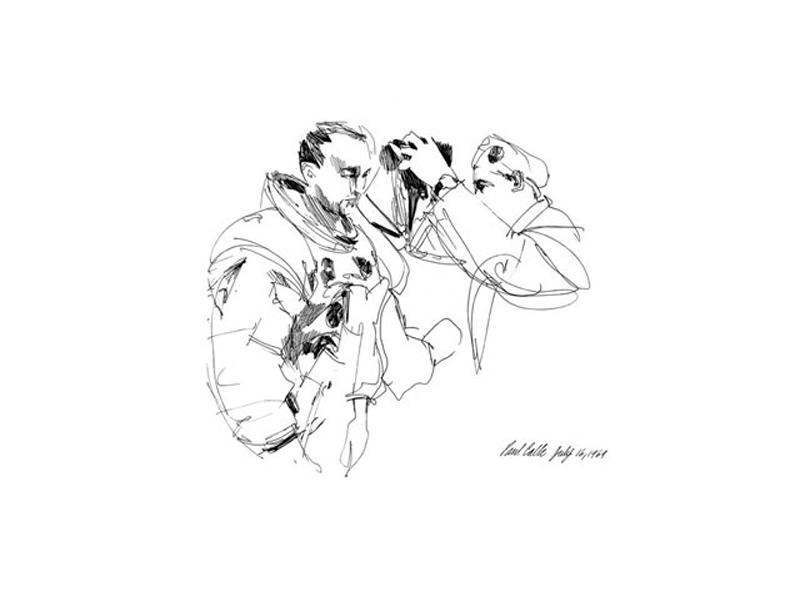
Mike Collins
Artist: Paul Calle, 1969
Media: Felt tip pen on paper
Description: Paul Calle was the only artist with the Apollo 11 astronauts in the early morning hours of July 16, 1969, when they put on their spacesuits in preparation for the historic journey to land on the Moon.
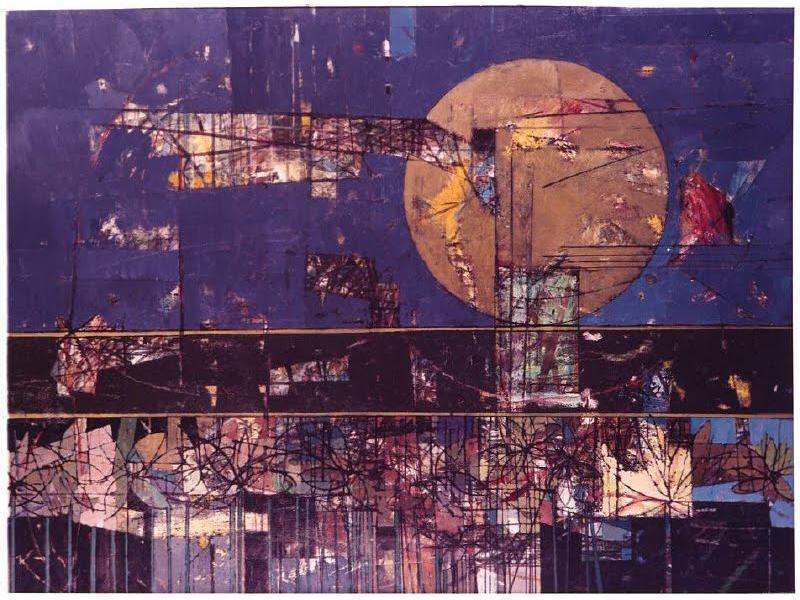
Moon, Horizon & Flowers (Rocket Rollout)
Artist: Jack Perlmutter, 1969
Media: Oil on canvas
Description: The most advanced technology, along with the subtropical Florida landscape, provided a variety of interesting forms, shapes, and colors for visiting artists during the time of the Apollo Moon-landing program.
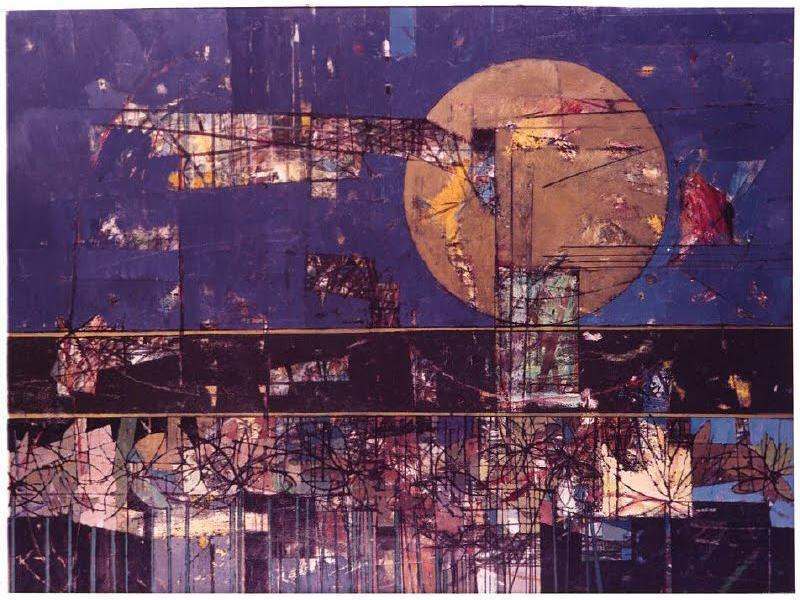
Moon, Horizon & Flowers (Rocket Rollout)
Artist: Jack Perlmutter, 1969
Media: Oil on canvas
Description: The most advanced technology, along with the subtropical Florida landscape, provided a variety of interesting forms, shapes, and colors for visiting artists during the time of the Apollo Moon-landing program.
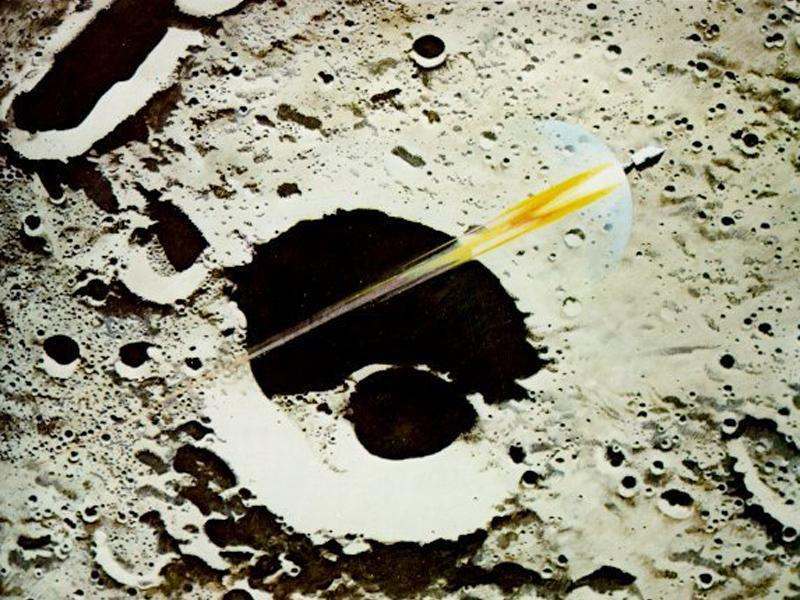
Apollo 8 Coming Home
Artist: Robert T. McCall, 1969
Description: Human eyes directly observed the far side of the Moon for the first time on Christmas Eve 1968. Robert McCall imagines the sight of the rocket engine firing to propel the spacecraft out of lunar orbit for its return to Earth.
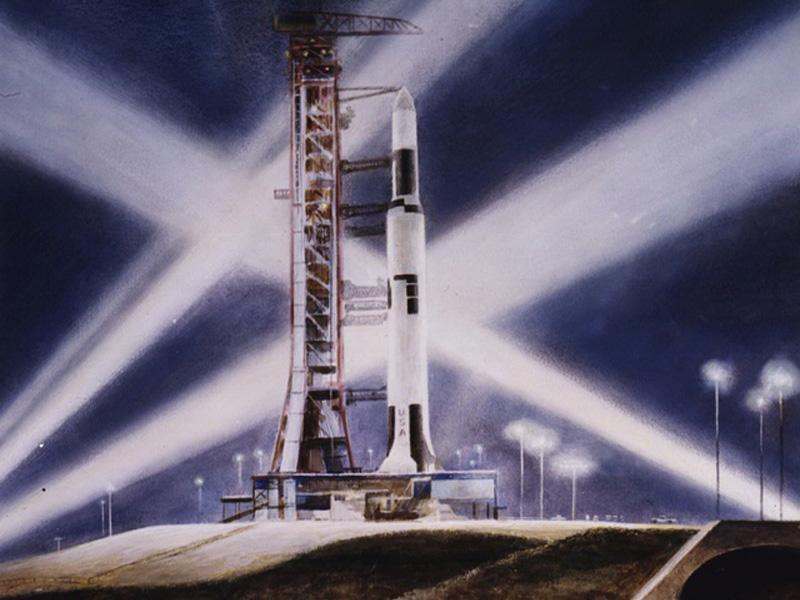
Sky Lab
Artist: Peter Hurd, 1973
Media: Watercolor on paper
Description: Peter Hurd participated in the early days of the NASA Art Program, documenting the last Mercury flight.
He returned ten years later to record the launch of Skylab, a rocket modified to allow astronauts to live and work in orbit. The three separate crews of Skylab astronauts arrived via Apollo command modules.
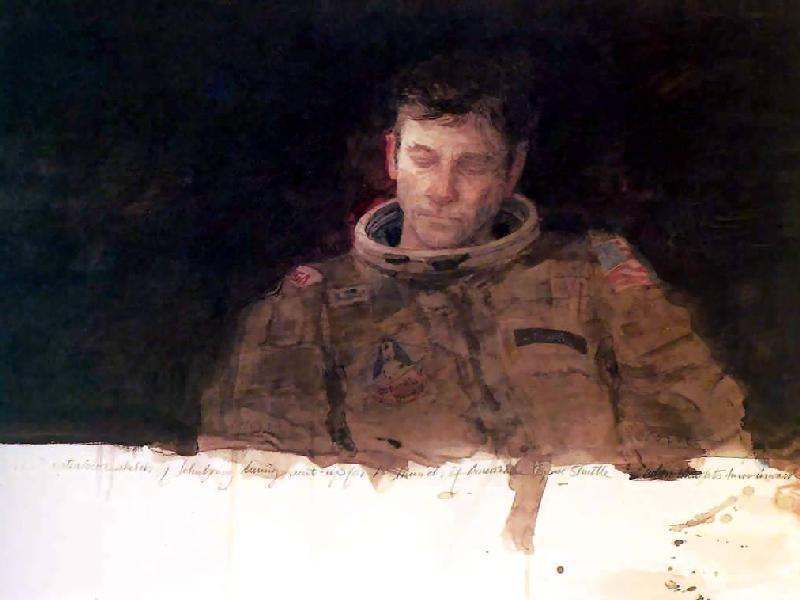
When Thoughts Turn Inwards
Artist: Henry Casselli, 1981
Media: Watercolor
Astronaut John Young reflects pensively as he suits up for launch on April 12, 1981. Casselli conveys a quiet, almost spiritual moment when the astronaut must mentally prepare for his mission.
This was the first time that the newly inaugurated space shuttle would carry humans, in this case the two-person crew of John Young and Robert Crippen.
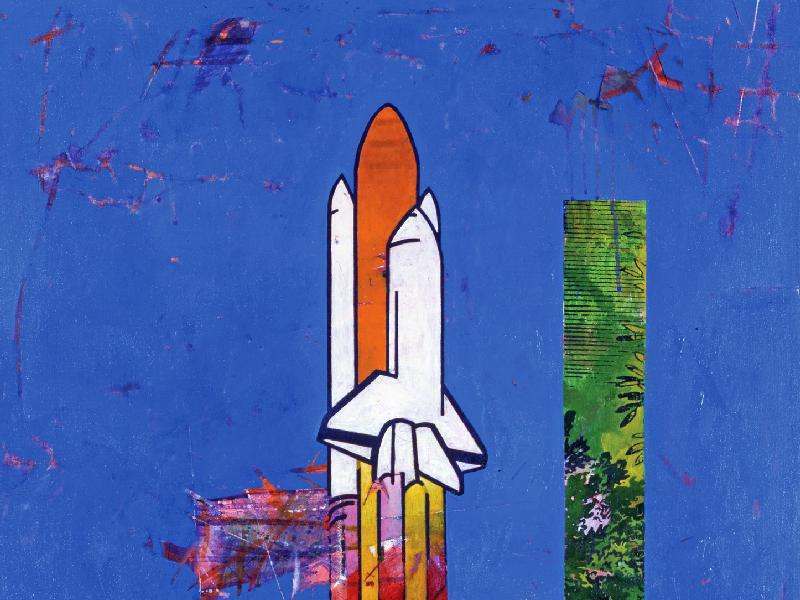
iftoff At 15 Seconds
Artist: Jack Perlmutter, 1982
Media: Oill on canvas
Description: The Columbia Space Shuttle lifted off on March 22, 1982. Perlmutter depicted a parallel strip of tropical foliage, paying homage to the Florida landscape Columbia was leaving behind.
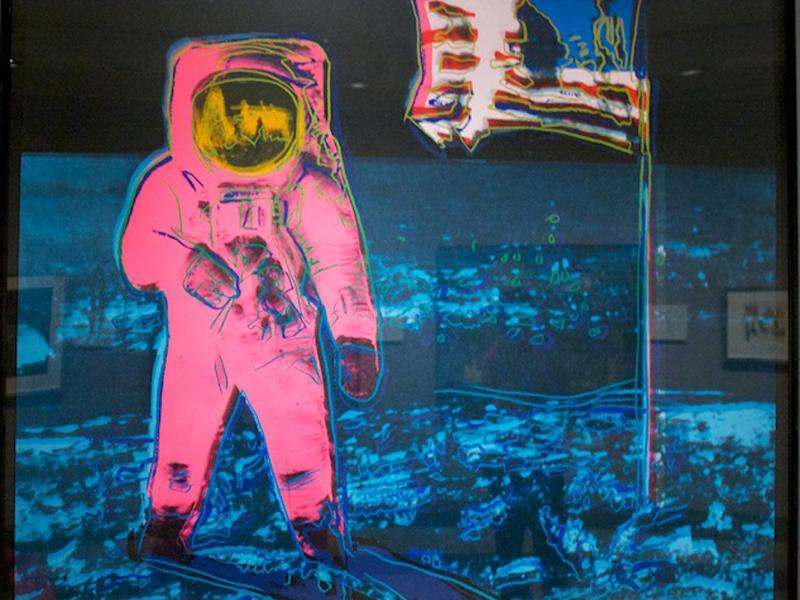
Moonwalk 1
Artist: Andy Warhol, 1987
Media: Silkscreen on paper
Description: The famous image of astronaut Buzz Aldrin standing on the Moon has become an icon of popular culture. The American hero with the U.S. flag became material for Warhol’s silkscreen series of nationally known images printed on vibrant, retro, poster colors.
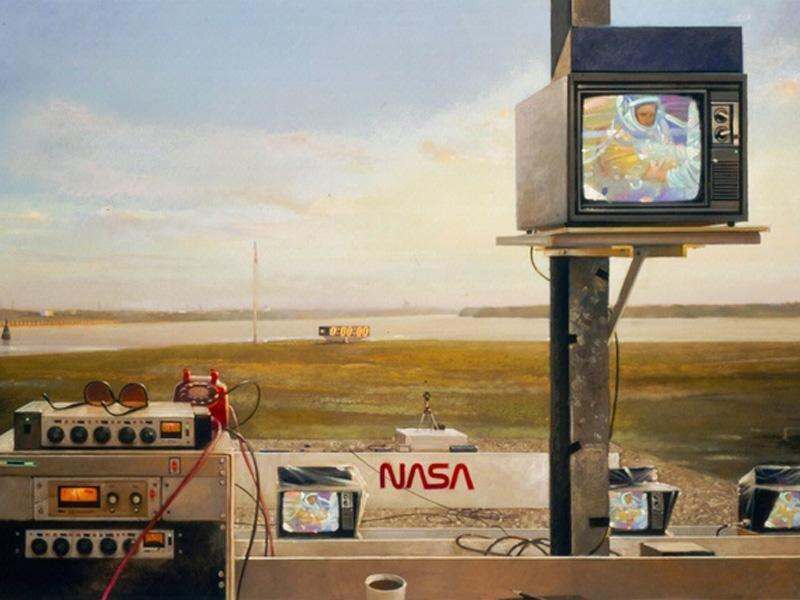
Sunrise Suit Up
Artist: Martin Hoffman, 1988
Mixed media
Description: Martin Hoffman captures astronaut suit-up in a wholly original way — through the television screens in the media area at the Kennedy Space Center.
The launch pad can be seen in the distance beyond Banana River. It is one moment of calm before the frenzy of launch activity.
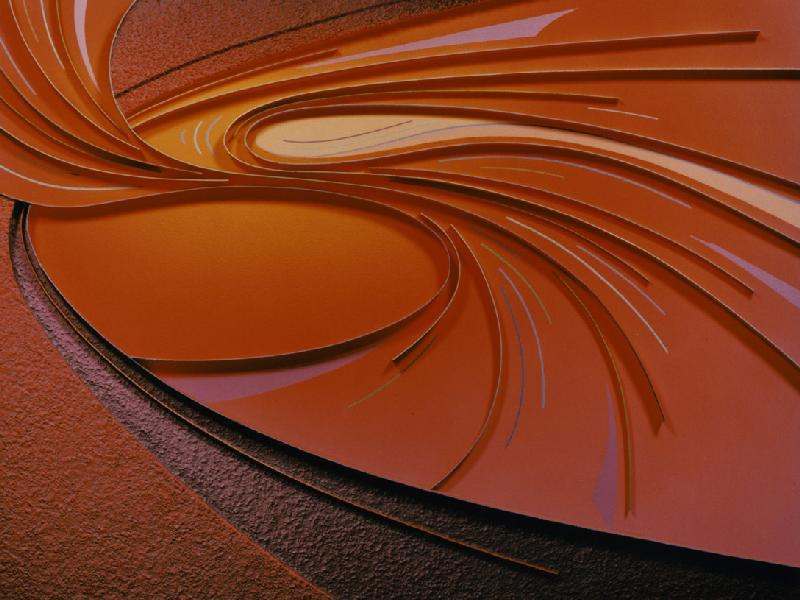
Fluid Dynamics
Artist: Tina York, 1995
Mixed media
Description: Tina York graphically depicts the principles of fluid dynamics, the movement of gases as a solid body passes through them. York researched this concept at California’s NASA Ames Research Center while participating in the NASA Art Program.

Servicing Hubble
Artist: John Solie, 1995
Media: Oil
Description: The painting depicts the historic servicing of the Hubble Space Telescope in December 1992.
Kathryn Thorton releases a defective solar panel into the heavens as another astronaut performs duties in the space shuttle Endeavour’s cargo bay.
The solar array and the wide-field planetary camera were some of the major units serviced during the STS-61 mission.
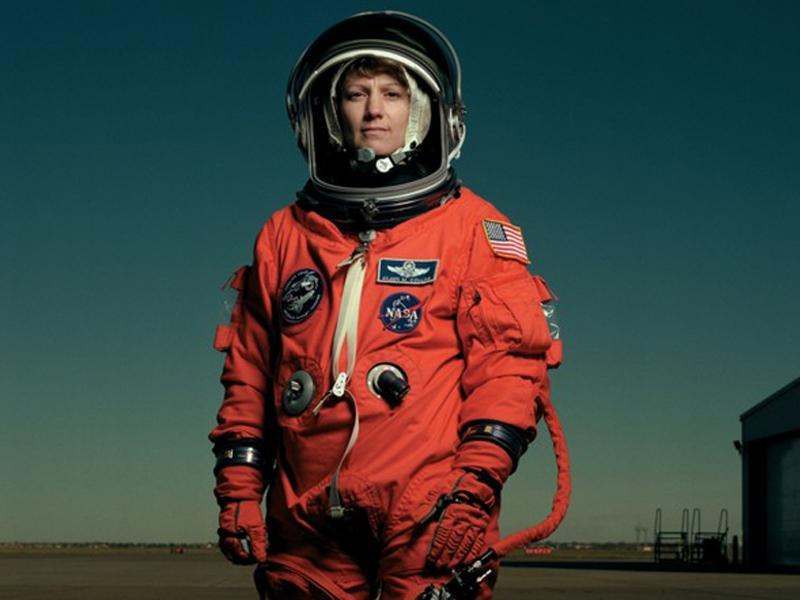
Eileen Collins
Artist: Annie Leibovitz, 1999
Media: Photograph
Description: Annie Leibovitz photographed Eileen Collins at NASA’s Johnson Space Center in Houston, Texas, during training. Collins was the first female pilot (Discovery in 1995) and first female commander (Columbia, 1999) of a space shuttle program.
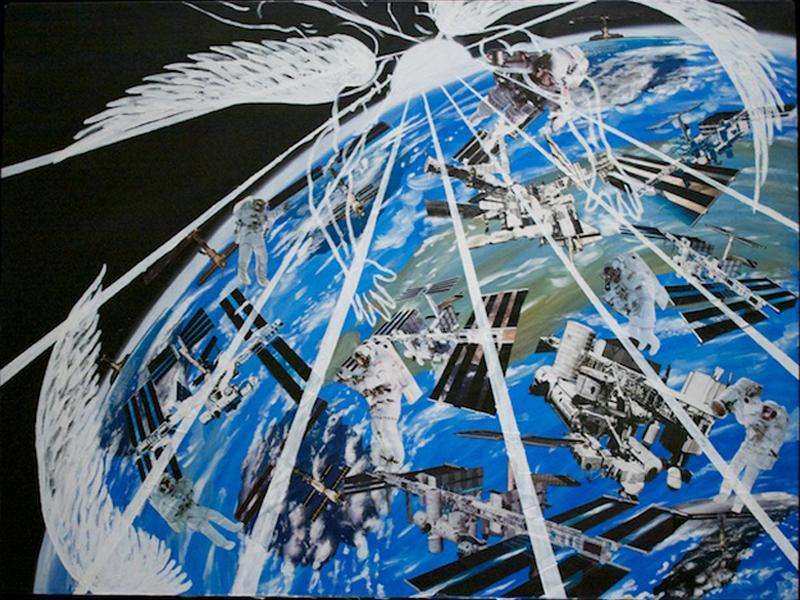
A New Frontier
Artist: Keith Duncan, 2001
Mixed Media
Description: Duncan depicts the International Space Station in an allegorical context. Icarus and Daedalus are hovering angelically over the Earth’s surface, which is dotted with suspended configurations of the International Space Station and astronauts. Rays of sun emanate and provide a canopy for the floating astronauts and spacecraft.

Chip and Batty Explore Space
Artist: William Wegman, 2001
Media: Photograph
Description: William Wegman’s signature Weimaraners pose as astronauts. One peers out of a space station while the other conducts a spacewalk. NASA loaned Wegman a model of a spacesuit to use in his work.
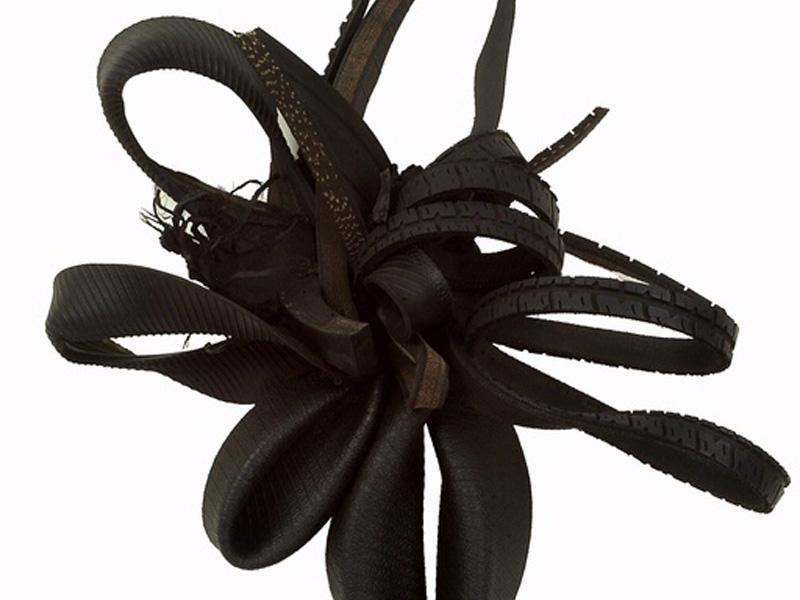
Remembering Columbia
Artist: Chakaia Booker, 2006
Media: Rubber
Description: Chakaia Booker used rubber, her signature medium, to commemorate the Columbia crew. Pieces of a space shuttle tire that NASA donated to Booker are incorporated into the work.
The resulting sculpture resembles a black star, reflecting mournfully upon February 1, 2003, when Columbia suffered an aerodynamic break-up during reentry.
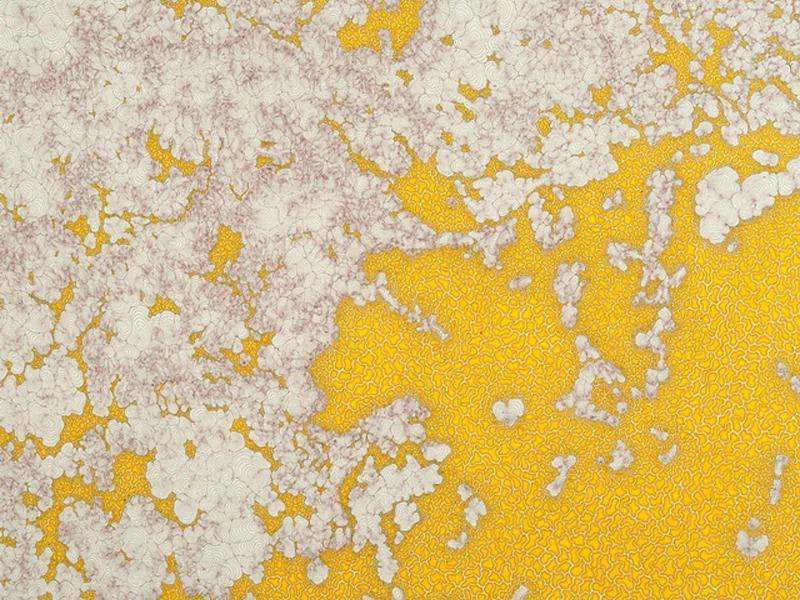
Artist: Daniel Zeller, 2006
Media: Ink on paper
Description: The basis of Daniel Zeller’s drawing is the intricate surface of Saturn’s moon Titan, as recorded by the Cassini spacecraft. Cassini arrived at Saturn in July 2004 after a seven-year voyage, beginning a four-year mission.
Would you like to support Flashbak?
Please consider making a donation to our site. We don't want to rely on ads to bring you the best of visual culture. You can also support us by signing up to our Mailing List. And you can also follow us on Facebook, Instagram and Twitter. For great art and culture delivered to your door, visit our shop.

